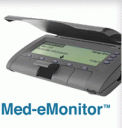Cognitive Design of Personal Med Dispensers
Resigning a pill bottle to meet specific cognitive needs doubles medication compliance.
Not taking meds properly is a major issue in healthcare. Approximately 125,000 people die from improperly taking meds every year in the US. As much as $100B-$300B is wasted in hospital visits, tests and lost productivity associated with lack of compliance with medication regiments.
 Studies show that we take our meds according to the doctor’s orders only 40-50% of the time. The problem is we forget (or fail to remember to remember to take our meds – a prospective memory need), are boggled by the complexity of what to do (imagine taking 10-15 different meds per day) and have self esteem issues (taking meds makes us appear weak or a burden). In short, prescription pill bottles we get from the pharmacy don’t meet the complex cognitive needs (prospective memory, multi-pill complexity, self esteem) associated with personal medication management.
Studies show that we take our meds according to the doctor’s orders only 40-50% of the time. The problem is we forget (or fail to remember to remember to take our meds – a prospective memory need), are boggled by the complexity of what to do (imagine taking 10-15 different meds per day) and have self esteem issues (taking meds makes us appear weak or a burden). In short, prescription pill bottles we get from the pharmacy don’t meet the complex cognitive needs (prospective memory, multi-pill complexity, self esteem) associated with personal medication management.
 Fortunately a number of smart pill boxes have been designed to help us solve this problem. According to an excellent article on Medication Compliance by Allan Naditz in the November issue on Telemedicine and e-Health, these devices can take compliance from the 40-50% level to the 90-95% level.
Fortunately a number of smart pill boxes have been designed to help us solve this problem. According to an excellent article on Medication Compliance by Allan Naditz in the November issue on Telemedicine and e-Health, these devices can take compliance from the 40-50% level to the 90-95% level.
 He discusses eight smart pill boxes ranging from simple reminder systems to personal med dispensers that provide multiple reminders and contact a service provider automatically if you don’t take your meds. A You Tube video outlining the problem and pitching the MD2 system, a top of the line model, can be found here.
He discusses eight smart pill boxes ranging from simple reminder systems to personal med dispensers that provide multiple reminders and contact a service provider automatically if you don’t take your meds. A You Tube video outlining the problem and pitching the MD2 system, a top of the line model, can be found here.
This is cognitive design at its finest.
The artifact in question is a pill bottle or dispenser. It fails most of the time to support the desired outcome namely behavior change that results in taking the right med, in the right amount at the right time for all prescribed meds (medication compliance).
It fails because it lacks the features and functions required to meet the cognitive needs (e.g. prospective memory, multi-pill management, pride) of the users. Adding the required features – reminders, organizers, pre-packaging of multiple meds, alerts to service providers, etc. results in smart pill boxes that make the user feel more self-reliant and doubles the rate of compliance.
Achieving a specific mental state or a think-and-feel in the user is recognized as part of the design problem. Users must think they are able to manage meds themselves (ego and pride) and feel more self-reliant than like a burden to others. Not achieving this mental state for some users is worse than not taking their meds so it is a very real requirement.
Finally there is no one size fits all approach to smart pill boxes. There are at least eight different models with more in the works. Designers are taking the psychographic profiles (unique mix of cognitive needs) of different groups into account.
These are impressive results but a lot of cognitive redesign of personal medication management remains to be done. Unfortunately, there are no cognition friendly solutions to the personal meds management problem in common use.
The problem of medication compliance continues to cost lives and billions of dollars.